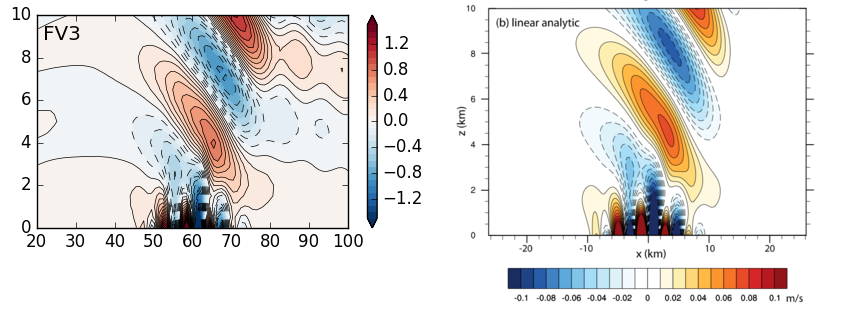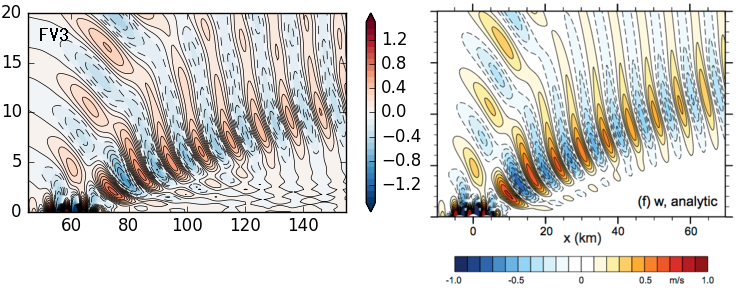FV3: Finite-Volume Cubed-Sphere Dynamical Core
Idealized Tests
Baroclinic wave test with embedded fronts (DCMIP test case 4.1)


Figure 1: Plots of FV3 relative vorticity at 850hPa zoomed in on the leading edge of the wave packet for the different resolutions (with 60 vertical levels) baroclinic wave test case at day 9. Contour interval is 1 x 10-4 s -1.
Non-hydrostatic orographic mountain waves on a reduced-radius sphere (without rotation)
Case M1: Uniform flow over a ridge mountain. This is a modified version of DCMIP case 2.1 with a quasi-2D mountain ridge as described in the NCAR document http://hiwpp.noaa.gov/reports/NonhydrostaticDycoreIdealizedTestCasesReport.pdf mtn-new.pdf , equation 12) with a ridge height of 250m. The model top is positioned at 20km (instead of 30 km) with an absorbing layer above 10-km, a horizontal resolution of 1.1 degrees (~720 meters) and a vertical grid spacing of approximately 500 meters. Sphere radius reduction factor 166.7.

Figure 2: Cross sections of vertical velocity (m/s) along the equator for orographic mountain wave test case M1 on the reduced-radius sphere (quasi-2D ridge in a barotropic zonal flow). The x-axis is longitude (degrees) and the y-axis is altitude (km). The plot on the right is the analytical solution for the flat plane with a infinite ridge, excerpted from the test case description provided by NCAR, and available on the HIWPP web site.
Case M2: Uniform flow over a circular mountain. This case follows DCMIP case 2.1 (no vertical shear with a Schär-type circular mountain). Horizontal grid spacing 0.55 degrees (~360 meters). Vertical grid spacing approximately 250 meters. Other parameters as in Table XIII of DCMIP test document, except X=166.67 instead of 500.

Figure 3: Same as for Figure 2 but with test case M2.


